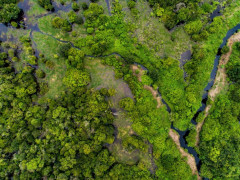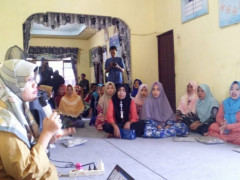Inheriting the Tradition of Caring for Nature
By Ibrahim ArsyadComplaints about Living Amid Smoke in Teluk Makmur
Bukhari, a member of the Firefighting Community (MPA), had given up. He had spent three nights at the site of the fire.
“This is how we are when a fire occurs. We must always be ready to monitor and extinguish the fire. Sometimes, we even extinguish the fire at night, even though our bodies are tired from working during the day,” said Bukhari.
Most of Teluk Makmur area is peatland, so it is prone to forest and land fires during the dry season. This village was also one of the areas badly burned during the massive fire hitting several areas in Indonesia in 2015. After three relatively calm years, Teluk Makmur has once again been hit by fire since early 2019. According to data recorded by the NASA VIIRS sensor, six hotspots were monitored at locations with different coordinates in Teluk Makmur Village in January - May 2019.
“Teluk Makmur would be rich if there were no forest fires. The fires burn people's land, which is a source of income for the local community,” said Jumari, chairman of MPA Teluk Makmur.
Forest and land fires not only harm the community financially but also waste energy and time. The health of the surrounding community is also affected because they inhaled too much smoke.
Owners of the burned land suffered huge losses because of crop failure, reduced turnover, and run out of capital. “About four hectares of my land was burned. As a result, I could not harvest at all,” said Syahril, an oil palm farmer in Teluk Makmur.
People who do not own land also suffered economic losses because non-farmers were also involved in the effort to extinguish the fire, so they needed to leave their main work, such as selling goods. Without working, they did not get any income.
Moreover, forest fires greatly disrupt people’s activities. Ayu, one of the residents, said, “The smog is very disturbing because it limits our visibility, so you have to be careful when driving. Moreover, schools are closed when there is a large forest fire.”
Forest and land fires continue to occur in some areas in Riau. On 11 June 2019, 27 hotspots with a high confidence level were observed throughout the Riau region. The community hopes that the Government will handle forest and land fires in a more serious and coordinated manner to prevent this disaster.





